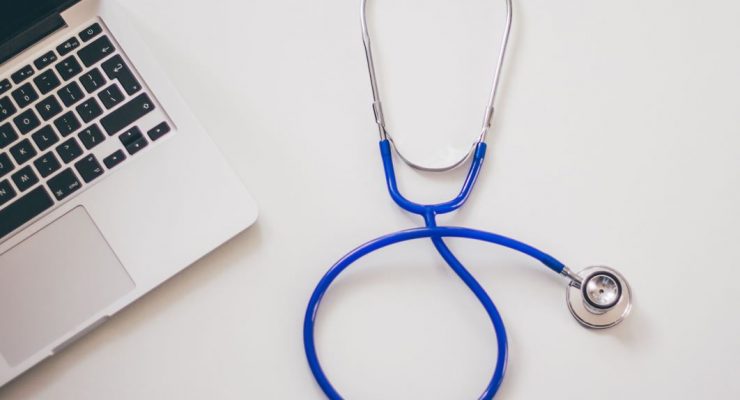I love sociology majors. They have a unique perspective as they try to apply recently learned concepts and methods while grappling to understand the sometimes-broken systems in our society so they can change them from within and address the disparities they’ve noticed in their daily lives. Some of the sociology majors taking my courses are focused on specific instances of injustice, often related to a structural inequality that has impacted them personally. I had a transgender student in my class who was interested in educating others about the violence related to a trans identity. I have had female students involved with organizing a “Take Back the Night” event to raise awareness and reduce stigma around sexual assault. I had a student who was president of the Black Student Union (BSU) focused on hosting cultural events with the goals of providing a social support network for Black college students. In each of these examples, the students had lived experience in a minoritized role – and the language to talk about it. And importantly, they wanted to use their training in sociology to raise awareness and provide support and services to those impacted by structural inequalities.
But because I work at the only public institution in Georgia to have a medical school and because I teach undergraduate medical sociology courses, most of the students in my sociology classes are not sociology majors. In fact, many of the people who take my class will only take this one class in the social sciences. This is their only formal exposure to sociology. And they see my course as just another box to check off their list towards their degree so that they can get to their actual career…in medicine.
Students in my classroom on the pre-med track are focused on getting into medical school and jumping through all the many hoops so they can eventually help people in their future role as medical doctors. As part of that long road with many expectations and requirements (including a high GPA in all classes), these students are often focused on what they need to do to get the grade in my class. I try to help them see how sociology applies to the medical field – whether it be related to gender-affirming healthcare, reducing barriers to accessing medical services following sexual assault, or racial differences in health outcomes. But these smart, motivated, capable students who are singularly focused on medical school are rarely interested in synthesizing sociological concepts in the same manner as majors. Instead, they want to know the answer to one driving question: “what’s gonna be on the test?” They want to do well on both the tests in my courses and the Medical College Admissions Test (MCAT).
My situation is not unique. The Association of American Medical Colleges (AAMC) recognizes the value of social science for a medical education. The AAMC recently restructured the MCAT so that understanding the principles of social science now comprises a quarter of the entrance exam to medical school. This has resulted in an increase in medically minded students in sociology courses all across the country. This shift has given instructors of sociology an important opportunity to provide the next generation of medical students with a sociological perspective. Sociology will help them not only on the entrance exam, and then in medical school, but in their intended careers interacting with hundreds of patients and dozens of colleagues.
Along with my co-authors, Dr. Melissa Powell-Williams and Dr. Kim Davies, I published a study in Teaching Sociology of how students who had recently completed the MCAT perceived sociology prepared them. Respondents in our study reported that their sociology courses helped them 1) develop empathy and 2) gain a sociological imagination. It should not be surprising that we think those are actually way more important skills to carry into a career in medicine than just scoring well on the MCAT. Of course, you do need to score well on the MCAT to get into medical school, and we as instructors want to help our students do well on their tests. But we shouldn’t be creating a “pre-MCAT” course to address the influx of premedical students seeking social sciences. We should keep teaching sociology as a discipline. All of our students will benefit from learning to identify the sources of a news story or read a primary source and analyze it from a sociological perspective. Developing empathy and understanding how social structure affects individual decisions are extremely important skills for people in any field – very much including medicine.
It is our mission as sociology instructors to give all our students – majors or otherwise – the skills to navigate a multicultural world. A primary portion of those skills is developing empathy and a sociological imagination. The quote that motivates the URL for this website comes from an American Sociological Association Presidential Address where Dr. Michael Burawoy said, “our students are our first and captive public,” and indeed the restructuring of the MCAT is bringing many more students into our classrooms. Even as they come to us in order to score well on a standardized test, this gives us an opportunity to teach them sociology. The AAMC’s emphasis on the importance of social science in providing more effective medical services is laudable. We need to validate their intention to cultivate cultural competence by helping students understand and appreciate how useful a sociological imagination can be for their intended career in medicine and as members of our society.
The students I teach want to be doctors, nurses, physical therapists, or work in healthcare administration. And, in those roles, they will interact with a wide cross-section of people who vary from them on many social demographic indicators. They will interact with patients and colleagues who are different from them in terms of gender, race, sexuality, social class, age, religion, and ability, among others. They will be participants in the systems and institutions that sociologists study. They will deal with people in their most vulnerable moments when empathy and productive communication can be life-changing, or even life-saving. It’s critical that we distill to them the relevance of our hard-won insights. What I try to do in my class is to teach sociology as a way to think about taking the role of the other – imagining how someone makes decisions based on their position in the broader social structure and seeking to understand where inequalities stem from as we examine the structures in which people are embedded. I try to get students to think about how people make choices in context, how people are constrained by their socioeconomic status, their race/gender/sexuality and the political environment into which they were born. By first understanding these inequalities in our society, we can then work to address them and facilitate change. These sociological teachings are valuable for future medical providers to reach their patients and serve them effectively.

Elizabeth Culatta is an assistant professor of sociology in the Department of Social Sciences at Augusta University. Dr. Culatta studies social determinants of health especially focused on identity tied to mental health and substance abuse for young adults. She has published in journals including Society and Mental Health, Social Currents, and Journal of Health Psychology. Dr. Culatta teaches medical sociology courses as well as Introduction to Sociology, often including pre-medical students.


Comments